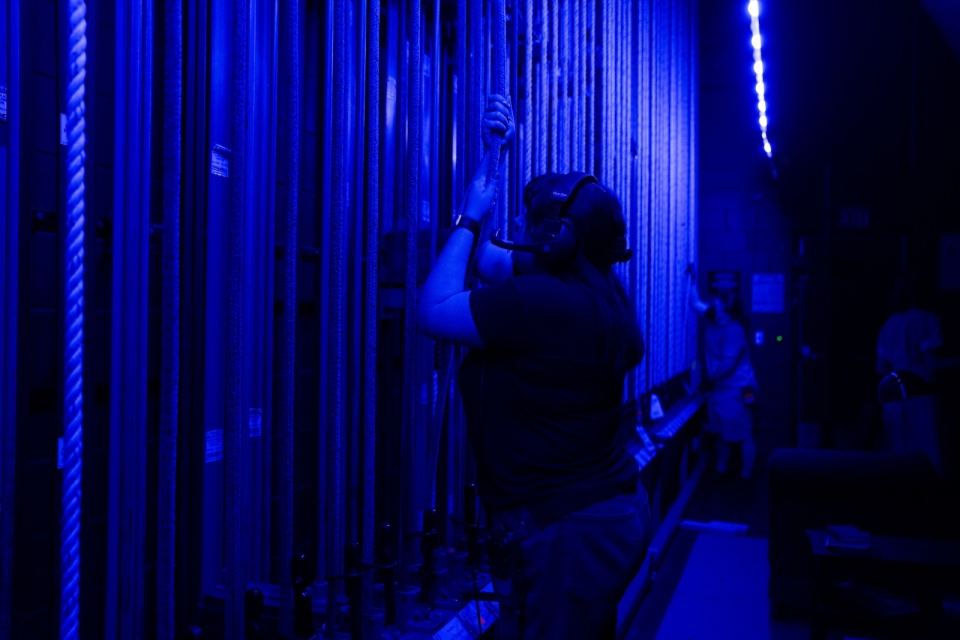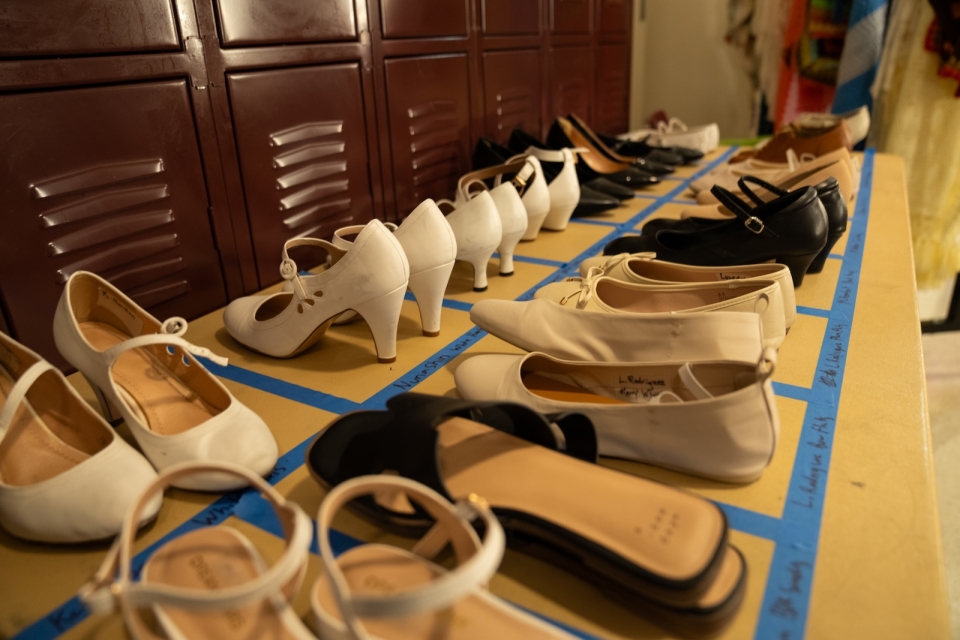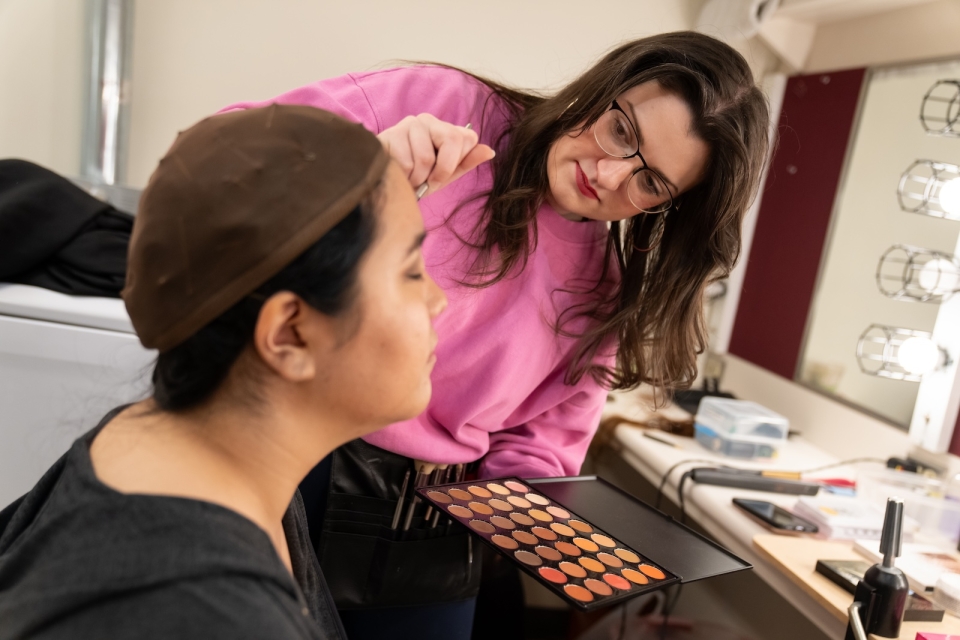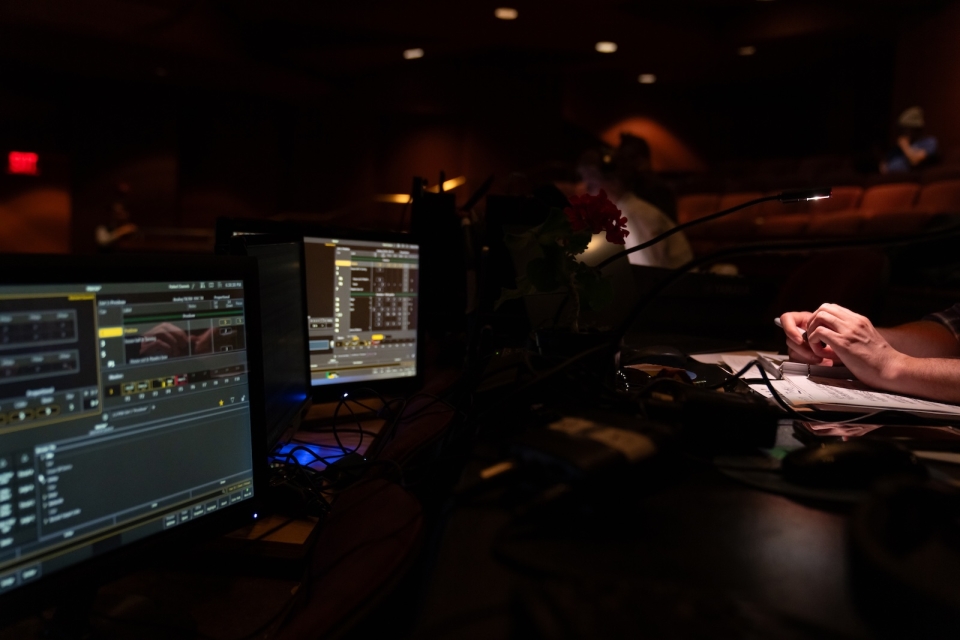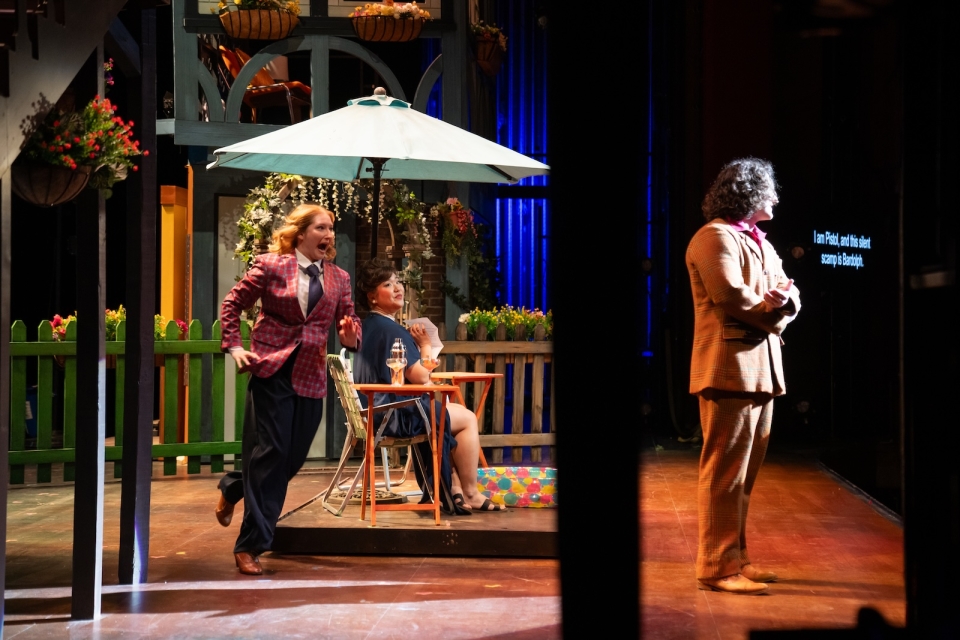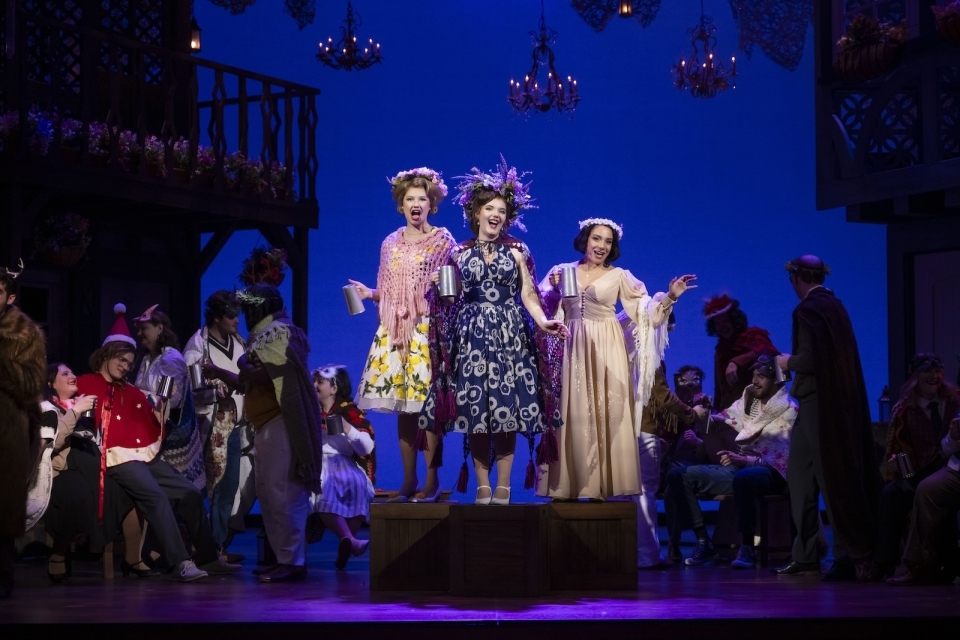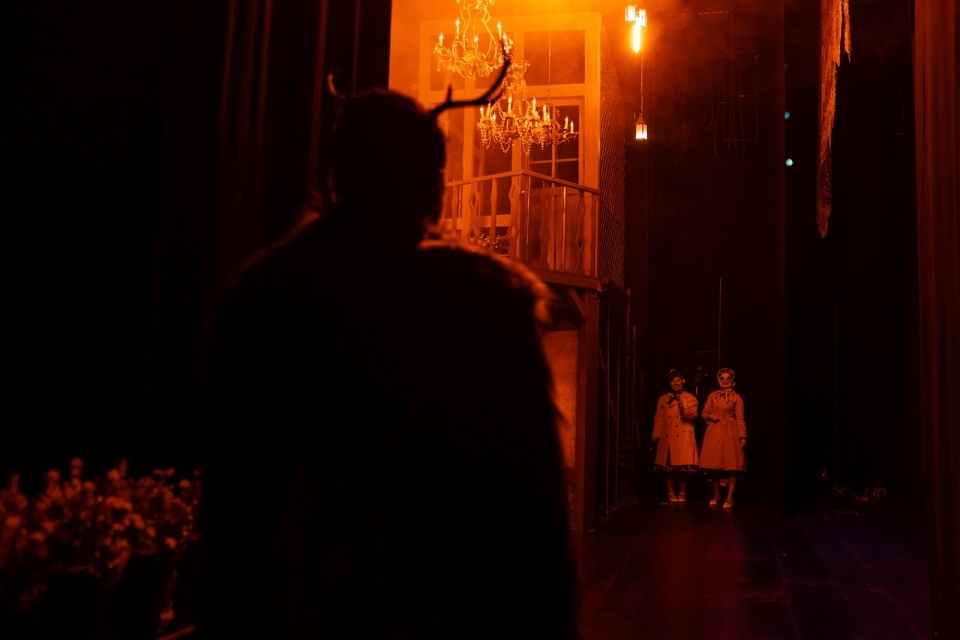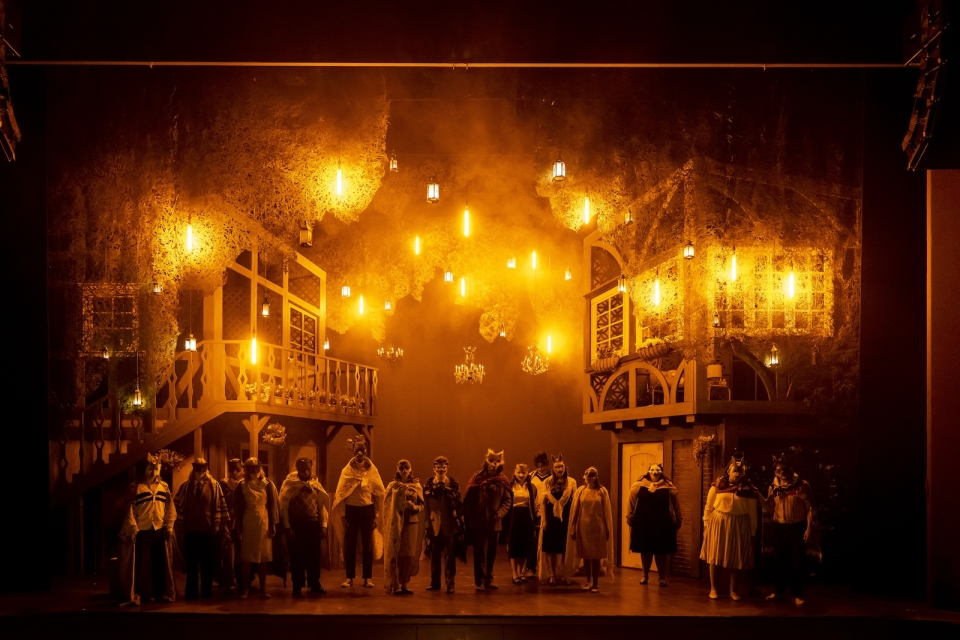The Art of Making Merry
April 11, 2025
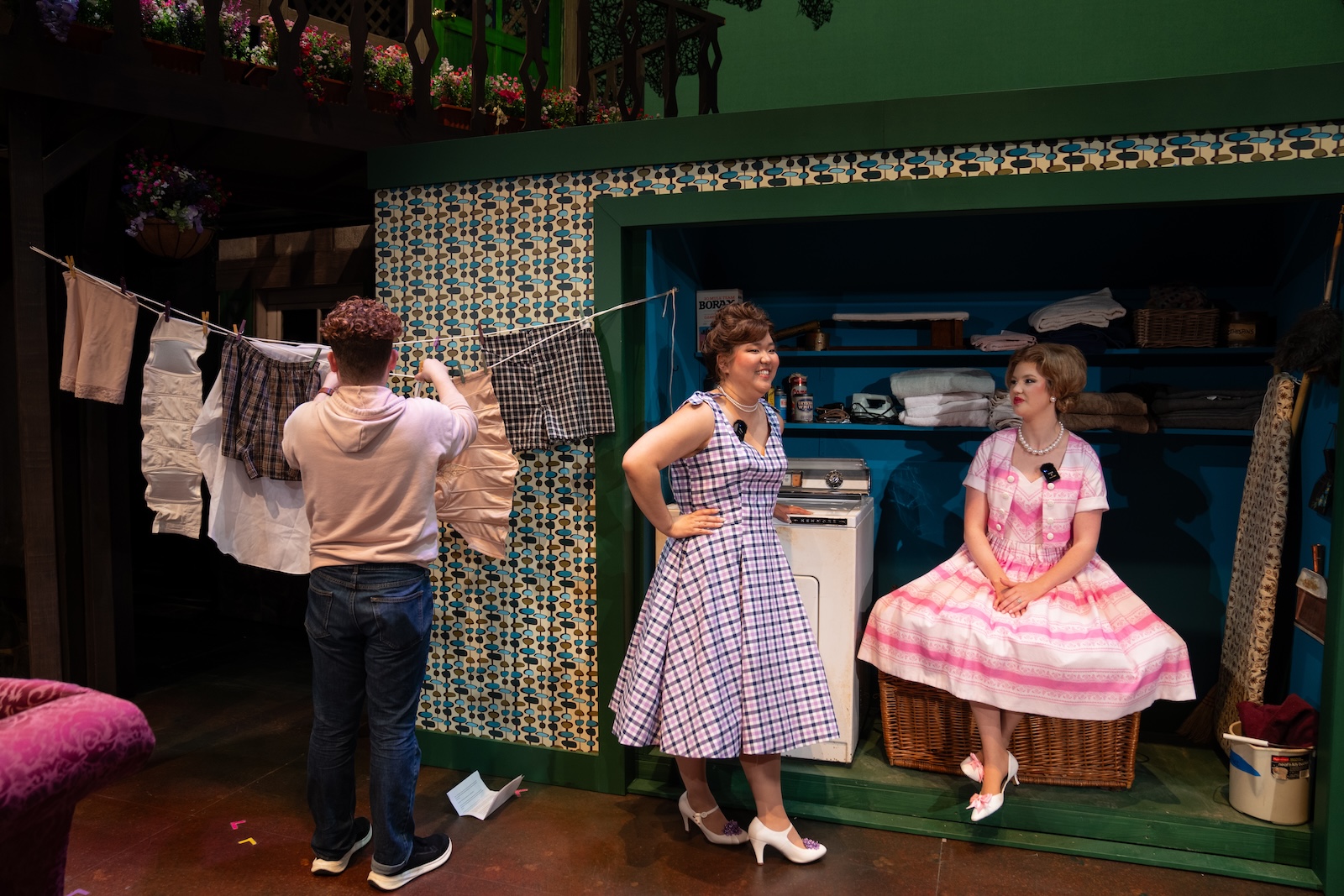
Go behind the scenes of the Maryland Opera Sudio’s production of “The Merry Wives of Windsor.”
By ARHU Staff
Mid-century flair, sharp wit and domestic rebellion collide in Maryland Opera Studio’s (MOS) genre-bending take on Shakespeare’s “The Merry Wives of Windsor”—a vibrant production set in the 1960s but spanning centuries of gender politics and challenges to entrenched patriarchy.
Originally penned in the late 1500s, adapted into opera in the mid-1800s and now reimagined on the UMD stage, “Merry Wives” tells the story of two clever women who outmaneuver an arrogant suitor, a jealous husband and a parade of misguided men—reminding audiences that disruption can be both hilarious and powerful.
Designed by MFA students in the School of Theatre, Dance, and Performance Studies (TDPS), the set itself is a marvel: flying walls, rooms on hidden wagons, a fully outfitted laundry space and even a 1960s fridge. In one scene set in a verdant and sparkling forest, sodium-vapor lamps transform the stage into a black and white, film noir vibe. From sets to costumes, the opera is part of an ongoing partnership between MOS and TDPS’ Design and Production program, which helps bring ambitious staging to life with support from technical staff at The Clarice.
“It’s been really exciting—I feel like the energy is pretty electric as we all finally see what we’ve been working on come together,” said Alla Salakhova, a first-year MOS student who appears in the chorus and also plays Bardolph. It’s her first operatic performance of this size at UMD. “The show is just general tomfoolery; it’s been such a joy to work on.”
These behind-the-scenes images offer a rare glimpse into the ingenuity and artistry that drive a production of this scale.
Behind-the-scenes photos by Taneen Momeni and Lisa Helfert. The production runs April 11-19. Reserve your tickets and view the program book here.



